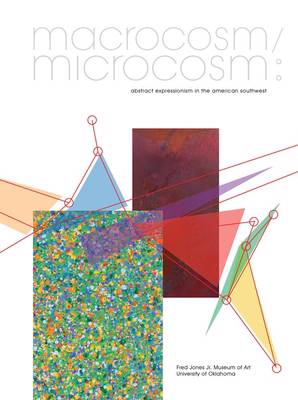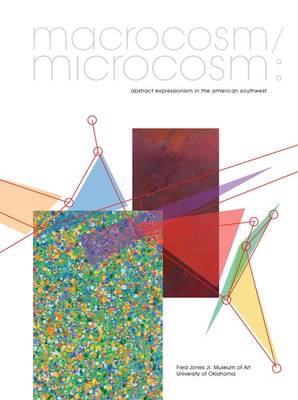
Bedankt voor het vertrouwen het afgelopen jaar! Om jou te bedanken bieden we GRATIS verzending (in België) aan op alles gedurende de hele maand januari.
- Afhalen na 1 uur in een winkel met voorraad
- Gratis thuislevering in België
- Ruim aanbod met 7 miljoen producten
Bedankt voor het vertrouwen het afgelopen jaar! Om jou te bedanken bieden we GRATIS verzending (in België) aan op alles gedurende de hele maand januari.
- Afhalen na 1 uur in een winkel met voorraad
- Gratis thuislevering in België
- Ruim aanbod met 7 miljoen producten
Zoeken
Macrocosm/Microcosm
Abstract Expressionism in the American Southwest
Mark Andrew White
Paperback | Engels
€ 21,45
+ 42 punten
Omschrijving
In the 1950s, the American Southwest became a crossroads for Abstract Expressionists from the New York School and the San Francisco Bay Area. Elaine de Kooning, Richard Diebenkorn, and others found inspiration in the expansive land and sky of the region and used gestural brushwork and veils of color to depict the vast spaces and distinctive coloring of the landscape. They joined with local artists in Arizona, Colorado, New Mexico, Oklahoma, and Texas to create a distinctly modern view of the Southwest that expressed the aesthetic and cultural concerns of postwar America. Macrocosm/Microcosm: Abstract Expressionism in the American Southwest traces the spread of Abstract Expressionism from the East and West Coasts. The vacant yet astounding immensity of the Southwest prompted many to pause in contemplation of both the limitless cosmos above and the nuanced variations of the natural world below. As if the spaces of the Southwest were not vast enough, scientific and technological advances in the postwar era changed perceptions regarding the extent of the universe. The establishment of the Los Alamos National Laboratory in New Mexico and the NASA space launches, organized and controlled in Houston, linked the Southwest to the expansion of human knowledge into microcosmic and macrocosmic spaces of the atom and the solar system.
Specificaties
Betrokkenen
- Auteur(s):
- Uitgeverij:
Inhoud
- Aantal bladzijden:
- 98
- Taal:
- Engels
Eigenschappen
- Productcode (EAN):
- 9780985160975
- Verschijningsdatum:
- 1/07/2015
- Uitvoering:
- Paperback
- Formaat:
- Trade paperback (VS)
- Afmetingen:
- 226 mm x 300 mm
- Gewicht:
- 544 g

Alleen bij Standaard Boekhandel
+ 42 punten op je klantenkaart van Standaard Boekhandel
Beoordelingen
We publiceren alleen reviews die voldoen aan de voorwaarden voor reviews. Bekijk onze voorwaarden voor reviews.












